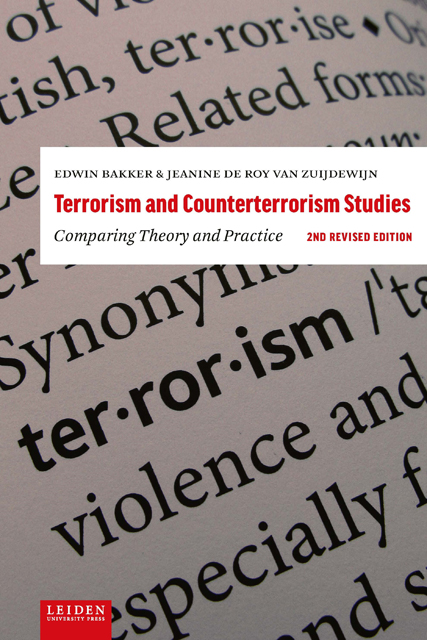Book contents
- Frontmatter
- Contents
- List of boxes & figures
- Preface
- About the authors
- Acknowledgements
- 1 Definition and nature of terrorism
- 2 History of terrorism
- 3 Terrorism studies
- 4 Assumptions about terrorism
- 5 Assumptions about counterterrorism
- 6 Dealing with the impact of terrorism
- 7 Trends and developments in (counter)terrorism and a future research agenda
- Index
6 - Dealing with the impact of terrorism
Published online by Cambridge University Press: 12 January 2023
- Frontmatter
- Contents
- List of boxes & figures
- Preface
- About the authors
- Acknowledgements
- 1 Definition and nature of terrorism
- 2 History of terrorism
- 3 Terrorism studies
- 4 Assumptions about terrorism
- 5 Assumptions about counterterrorism
- 6 Dealing with the impact of terrorism
- 7 Trends and developments in (counter)terrorism and a future research agenda
- Index
Summary
Introduction
In the first chapter we discussed the definition and essence of terrorism. Although there is no universally accepted definition of the phenomenon, it is generally regarded as an instrument used by certain actors to achieve political goals by spreading fear and anxiety through violent acts. These acts are part of the practice and not a goal in themselves. We quoted Brian Jenkins, who said that terrorists like to see a lot of people watching, not a lot of people dead. This means that audiences are very important and that their reactions to a terrorism-related incident are what matters. Terrorism is about impact, about how you and I react to a bomb attack, hostage taking or a shooting spree. Of course it also depends on media coverage, statements by politicians, official responses and other factors. Spreading fear is a key aspect in this mechanism of how terrorism works.
Fear of terrorism
Fear features prominently in many definitions of terrorism. But what is fear and how does it ‘work’? Scholars from many different disciplines have struggled to find answers to the fundamental questions. The difficulty lies, amongst other things, in the fact that fear pertains to a diffuse range of situations and behaviours. It ranges from an individual, psychological state of mind or a socio-cultural sentiment in society to political claims and rhetoric. In relation to the phenomenon of terrorism, Edwin Bakker and Beatrice de Graaf referred to fear as ‘a sentiment of anxiety caused by the perception or presence of danger’ (2014, p. 1). It should be stressed that fear in itself should not be considered merely as a negative reaction to threats and attacks. According to these authors, fear of danger is a very natural and useful emotion. It also functions as a survival mechanism that helps people to take the right measures and actions to protect themselves (p. 2). However, much depends on the level of or reasons for fear.
Fear is a complex and multidimensional phenomenon. One of the dimensions is time. To understand the complexity of fear of terrorism a distinction should be made between immediate fear responses to terrorism (fear after an attack) and enduring, sustainable fear of terrorism that is not ignited by a prevailing acute threat.
- Type
- Chapter
- Information
- Terrorism and Counterterrorism StudiesComparing Theory and Practice, pp. 201 - 228Publisher: Amsterdam University PressPrint publication year: 2022

